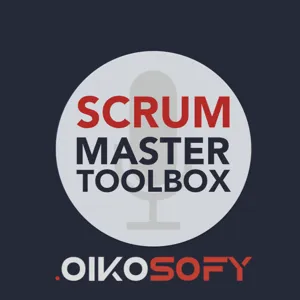Forecast Over Estimation, How To Transform Your Approach To Project Management, NoEstimates Unplugged Week | Luis Garcia

Luis Garcia: Forecast Over Estimation, How To Transform Your Approach To Project Management, NoEstimates Unplugged Week
This is one of a series of episodes where Product Owners explain how they used, and benefited from #NoEstimates in their work with teams.
To know more about #NoEstimates, sign-up to get the first 3 chapters of the book here.
Introduction to #NoEstimates
Luis Garcia, transitioning from estimation discomfort to a #NoEstimates approach as a product owner, discovered its benefits after attending a workshop by Woody Zuill. Faced with the challenges of hard commitments in government projects, he sought to shift focus from when to what and why in project discussions.
A Transformative Project Example
Implementing #NoEstimates in a kanban team, Luis emphasized work breakdown and comfortable task sizing. This method facilitated stakeholder communication, improved expectation management, and enabled precise progress measurement through metrics like cycle time and using techniques like Monte Carlo forecasting.
Overcoming Implementation Challenges
When Luis tried to introduce #NoEstimates, he originally faced skepticism, misconceptions about planning, and stakeholder resistance. In those cases, Luis advises focusing on forecasting based on available data, ensuring team stability, and managing expectations effectively. And focusing on progress transparency, instead of trying to change people’s minds.
Strategic Stakeholder Management
Successfully integrating #NoEstimates involved fostering team accountability and ownership over the refinement process, thereby enhancing stakeholder dialogue and planning efficiency. For example, Luis shares that #NoEstimates shifted the team's focus to identifying and preparing the most valuable tasks, leveraging data for all planning and prioritization decisions. This focus helped to keep stakeholders informed, and improved transparency.
Measuring Success and Communicating Progress
Without traditional estimates, Luis's team adopted a probabilistic approach to measure and communicate progress, supported by insights from the book "Thinking in Bets" by Annie Duke.
When it came to adopting a different way to measure and communicate progress, practicality was key; even simple tools like Excel were effective for data management in the #NoEstimates process, emphasizing simplicity and scalability.
Advice for #NoEstimates Adopters
Luis recommends low-change experimentation with #NoEstimates to experience its benefits firsthand and stresses the importance of informative discussions over rigid planning.
Resource Recommendation
For those considering #NoEstimates, Luis suggests starting with the "NoEstimates" book and following thought leaders like Vasco Duarte, Woody Zuill, and Allen Holub on social media.
About Luis Garcia
Luis is a Program Manager at Formula.Monks, specializes in developing impactful digital products. Luis has over 10 years of experience and several Agile certifications, he adeptly applies Agile frameworks to meet client needs. His background includes a Master's in Computer Engineering and an Executive MBA. He is also fluent in English, Spanish, and French, he values diverse work environments and continuous learning.
You can link with Luis Garcia on LinkedIn.

